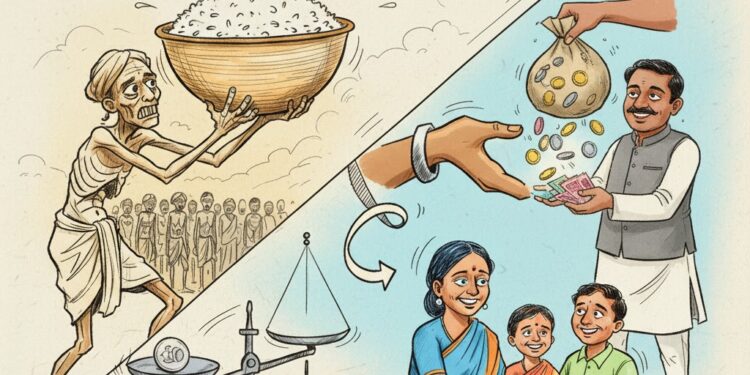India’s decades-long struggle against poverty continues to test policymakers, economists, and reformers, as the very definition of poverty — and the path to eliminating it — remains under scrutiny. For years, the country’s official poverty line has been tied to calorie consumption: 2,400 calories a day for rural residents and 2,100 for those in urban areas. But critics argue this narrow metric ignores the many dimensions of deprivation — from access to healthcare and sanitation to education and housing.
Rangarajan’s Reality Check
In a pivotal reassessment, the 2014 Rangarajan Committee, led by former Reserve Bank of India Governor C. Rangarajan, painted a more sobering picture. Using 2011–12 data, it found that 363 million Indians — roughly 29.5% of the population — lived below the poverty line.
The panel redefined poverty thresholds to:
-
Rs. 32 per day in rural areas
-
Rs. 47 per day in urban areas
Though these figures were higher than earlier benchmarks, they underscored a stubborn disconnect: rapid GDP growth has not translated into improved living standards for millions.
The Cost of Eradication: Affordable or Elusive?
A 2005 study titled “Redefining Poverty” suggested that the fiscal cost of lifting every poor household just above the official poverty line might be far less daunting than imagined. It estimated an annual outlay of roughly Rs. 57,000 crore, an amount considered “eminently affordable” relative to India’s national budget at the time.
Adjusted for inflation and demographic growth, that figure would be higher today — yet the study’s message still resonates: poverty eradication is less about affordability and more about efficient governance and political resolve.
The Case for a Universal Basic Income
As frustrations mount over the inefficiencies and leakages in India’s subsidy-driven welfare apparatus, a growing chorus of economists and policymakers is turning to Universal Basic Income (UBI) as a bold alternative.
Under UBI, every Below Poverty Line (BPL) household would receive a fixed monthly cash transfer — replacing a maze of overlapping and corruption-prone welfare schemes. Advocates say it offers:
-
Reduced Leakages: Direct cash transfers cut out bureaucratic intermediaries.
-
Empowerment: Households gain control to decide priorities — food, healthcare, education — based on need.
-
Administrative Simplicity: Replacing multiple welfare programs with one streamlined system could save billions in overhead.
Beyond Definitions, Toward Dignity
India’s poverty debate gradually shifts from statistical definitions to moral imperatives — from measuring the poor to meaningfully uplifting them. Whether through targeted subsidies, fiscal redistribution, or a universal income floor, the conversation now centers on one question: Can India translate affordability into action?
(With inputs from Mohan Guruswamy)











